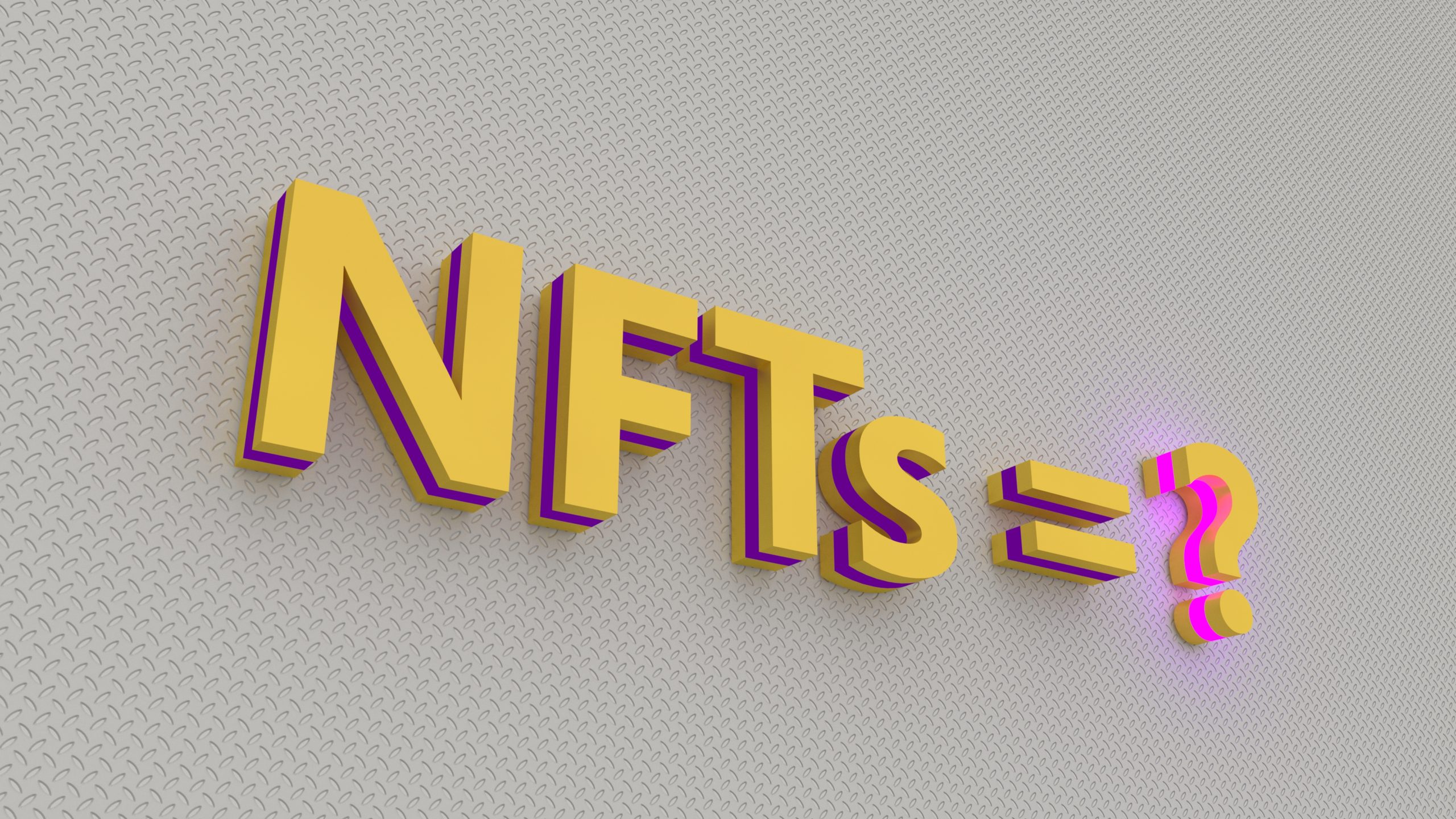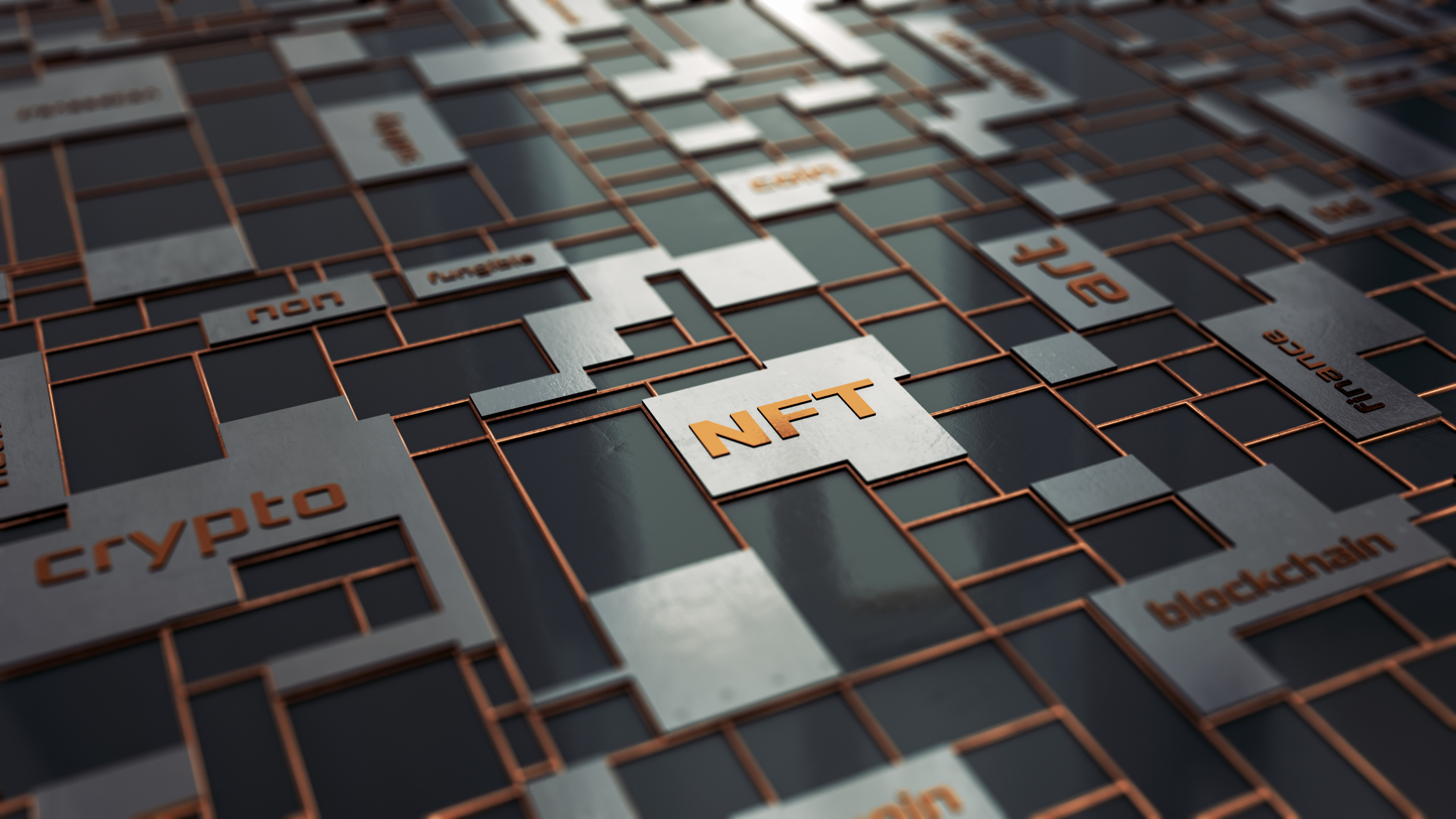NFTs are the new craze coming out of the cryptocurrency world and people are eager to get in on the action. Now, if only some benevolent tech wizard would explain what they are…
NFTs are yet another innovation to fall out of the Wild West that is cryptocurrency. If you know that people can buy, sell, and collect NFTs – sometimes for crazy amounts of money – then you’re already way ahead of the game!
So, what exactly are NFTs? Are they worth your time? Can you take advantage of this tech and make some money? We’ll attempt to put these great questions to rest below.
What are NFTs?

An NFT, or non-fungible token, is a digital asset that represents real-world objects like art, music, videos, and even tweets from Twitter! These tokens are bought and sold online, usually with cryptocurrency, but not always. In fact, world-renowned auction house Christie’s recently sold an NFT for a whopping $69.3 million at auction.
NFTs are new… ish. Their history is short but they weren’t born yesterday. They’ve been around since 2014 but they’ve recently started gaining popularity as a new way to buy and sell digital art. Indeed, since 2017 over $174 million has been spent on them!
If you’re thinking that that’s a lot of money to spend on digital art, you’re right. After all, you can literally download a video or screenshot of an image online for FREE… but the difference with an NFT is that you become the certified owner – not just one of the thousands that downloaded a copy of something online.
You could also say the same thing about physical art. Can’t you just buy a copy of the Mona Lisa and hang it on your wall? You could but it’s not the same thing. The copy can and will always be that: a copy and not the original. This is where the true appeal of NFTs arise:
- NFTs are usually one-of-a-kind or at least one of a severely limited run, and they come with unique, digital identifying codes.
- They are non-fungible, meaning that they are unique and cannot be replaced with something else. Bitcoin and fiat money, for example, are fungible – meaning you trade one currency unit for another currency unit, which is the same trade. A one-of-a-kind trading card, however, is a different story. Trade it in for another baseball card and you end up with something completely different. It’s non-fungible.
Unlike other digital assets, NFTs create scarcity. They allow the buyer to own the original item. In other words, digital bragging rights are the real thing for sale here. Not only that, they come with built-in authentication that serves as proof of ownership.
What is the technology behind NFTs?
NFTs are securely stored on a blockchain, which is the same technology on which cryptocurrencies are built. The blockchain ensures that NFTs remain one-of-a-kind and also makes them almost impossible to alter or counterfeit.
The blockchain doesn’t restrict access to copies of the original file but it does track the original file to provide the owner with proof of ownership that is separate from copyright.
How do NFTs work?

The most popular blockchain for storing NFTs is Ethereum’s, although other blockchains support them, too.
An NFT can be minted from tangible and intangible objects in the real world like:
- Art
- Videos and sports clips
- GIFs
- Virtual avatars and video game skins
- Designer sneakers
- Music
- Collectibles
- Tweets
NFTs are like digital collector’s items, where the buyer acquires a digital file instead of a physical object like a rare baseball card or oil painting.
Buyers also get exclusive ownership rights that are guaranteed by the blockchain.
An NFT can only have one owner at a time and its unique data makes it easy to verify ownership and transfer tokens from one owner to another.
How do NFTs differ from cryptocurrency?
Apart from the fact that they both use blockchain technology, there is no direct correlation between non-fungible tokens and cryptocurrencies like Bitcoin and Ethereum, which are essentially fungible. Like we mentioned earlier, cryptocurrency units can be exchanged for each other and are equal in value, which is why they make a good medium of exchange.
This isn’t the case with NFTs – or other non-fungible assets for that matter. Just as any old baseball card doesn’t have the same value as the super rare, well-preserved card you inherited from your grandfather, so too is one NFT not equal in value to another – even if they’re the same medium. An NFT comes with a unique digital signature that makes it impossible to exchange it with any other.
A better way to store your photos
Not quite ready to buy digital art and get involved in the confusing world of NFTs? How about a cool, new innovation to keep your priceless photos safe! Keep the memories that will never lose value secure with Photostick OMNI.
We’re curious… what do you think of NFTs? Are they the future of art collecting, or just a confusing fad? Let us know in the comments below – and don’t forget to share this post with someone who’d be interested!
I was a philosophy major .So having a perfect copy of a an object for a lesser amount is good enough for me.Especially if I’m funds limited. A copy of the Mona Lisa is good enough for me.To the Art Collector’s Business I am sure it’s not.A CD of an artist is good enough for me.
It would be easier to understand if you told/showed us some specific examples that have been sold, instead of categories.
I’m still confused. So does this artwork, for example, actually physically exist? Can you hang it on the wall or is it digital only? Can you listen to the music, or is it sheet music you can play on your piano? How can you own music that was created by someone else? If Bono (ex.) wrote a song, doesn’t he own it? Or does he have rights to sell it as an NFT? A rare baseball card and be taken out, viewed, touched and enjoyed. A painting hanging on your wall has color & texture and adds to the decor of your home. It can be viewed and enjoyed by all. What is the enjoyment of an NFT if it’s nothing but a “token” with a certificate of ownership and authenticity? I’m obviously missing some point here re. the physical nature of an NFT.
fad – as times get tight, folks will walk away from it, stick with the fungible items for exchange of other things, and leave a small group playing with them over in the corner
I need to do a bit more research on this product. What has been noted here is not enough to make an informed decision.